
12:25 PM (CDT)
1713547538 epoch

|
Friday April 19, 2024 12:25 PM (CDT) 1713547538 epoch |
|
October 18th, part I - The Nazi concentration camp at Dachau, Germany. |
|
|
|
|
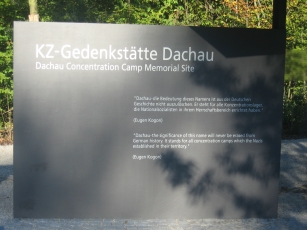
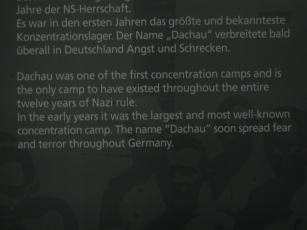
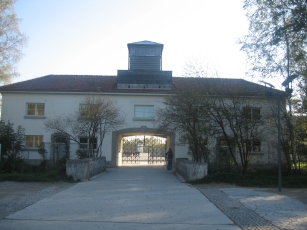
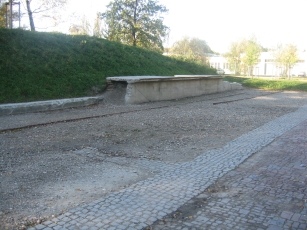
|
This was one of the most horrible days I've ever had in my life. Today, we visited the Dachau concentration camp. Something a lot of people don't realize is that Dachau is the name of a town, in addition to the camp. In fact, the citizens of Dachau actually welcommed the camp at first, because it brought jobs, and the town was in dire need of work. But what transpired there was a horror, a continuous series of atrocities. Dachau was one of the first, and it was the only concentration camp to have operated throughout the entire Nazi rule. It was a model of efficiency, and was used as a model for the other camps as they were built. A section of the original train tracks and platform still exist outside of the camp's fence. |
|
|
|
|
The Jourhaus was the entrance to the camp. It housed some of the camp's administration, and the iron gate stated "ARBEIT MACHT FREI," or "Work will set you free." |
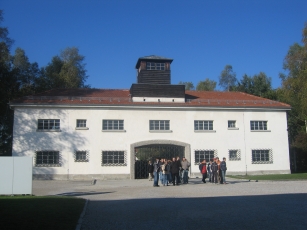
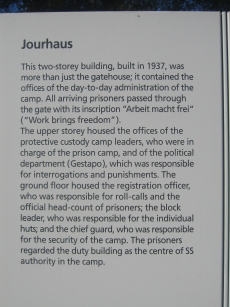
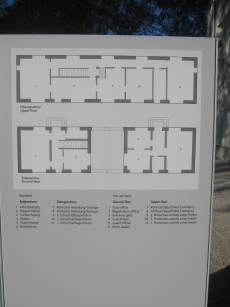
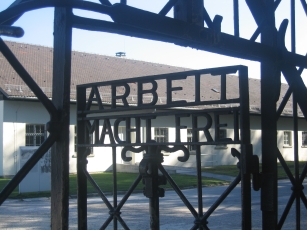
|
|
|
|
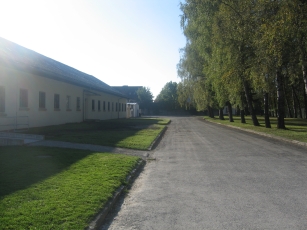
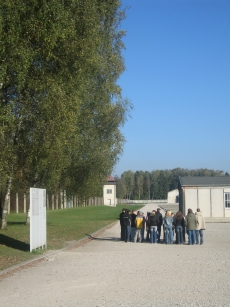
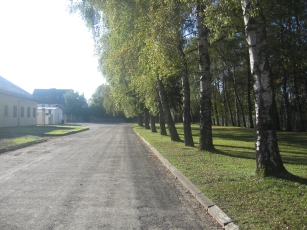
|
This is the western edge of the Dachau concentration camp. It was such an incredibly beautiful day. The third picture, pointed more at the trees than the camp, is so calm and peaceful. It's hard to believe I'm standing on the western edge of a Nazi concentration camp. |
|
|
|
|
The first building we visited was the "bunker." It was the building the Nazis housed the "special" prisoners in - the political prisoners, the Nazi prisoners, Catholic priests, etc. Prisoners in the bunker had their own cells (or were only two or three to a room), rather than the mass housing we saw later. The first photograph is of a pillbox (small, concrete firing position) behind the bunker. The next three pictures are of the bunker courtyard (the bunker is on the right), and the signs warning us of the sights ahead. |
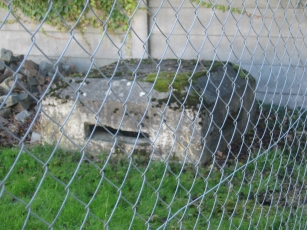
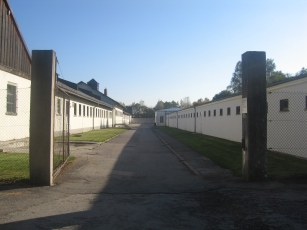
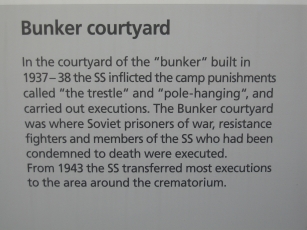
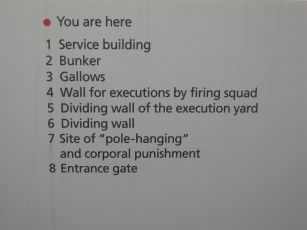
|
|
|
|
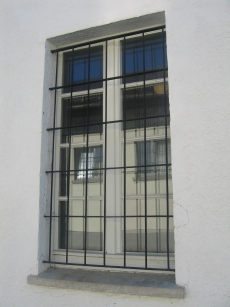
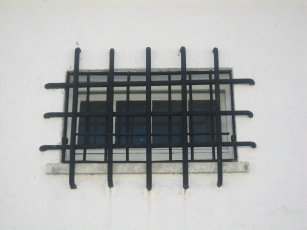
|
The SS were very serious about no one escaping from the bunker through the windows. |
|
|
|
|
The first photograph is of the bunker entrance, today. The second and third pictures are of the bunker area, circa 1945. |
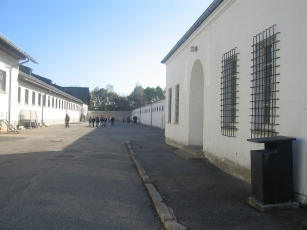
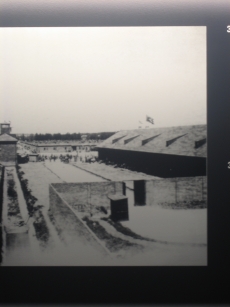
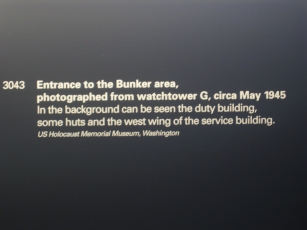
|
|
|
|
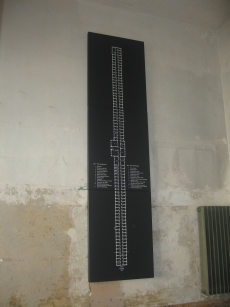
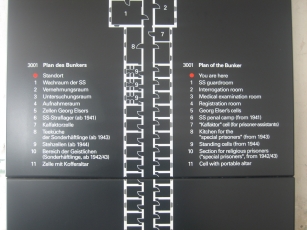
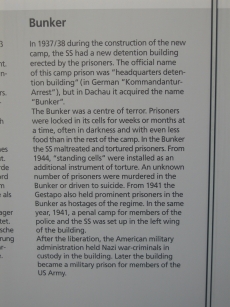
|
As you can see, the bunker was a long, narrow building, lined on both sides by rooms and cells. There were several "notorious" prisoners held here, including Johann Georg Elser and ex-members of the SS and Nazi party that had turned against Hitler. Elser attempted to assassinate Hitler in 1939 by planting a bomb at a scheduled speech. He missed Hitler by minutes. Elser was later murdered at Dachau in 1945, twenty days before American forces liberated the camp on April 29th. |
|
|
|
|
Meet Georg Elser. |
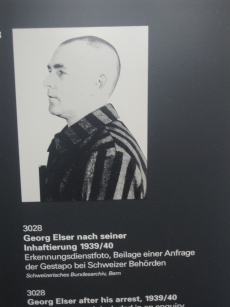
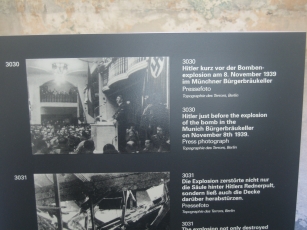
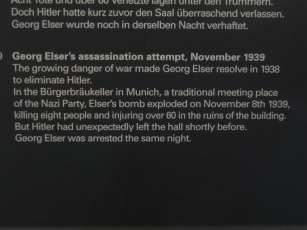
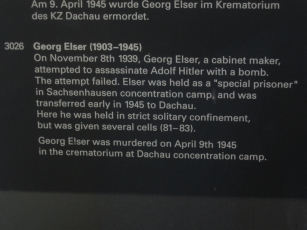
|
|
|
|
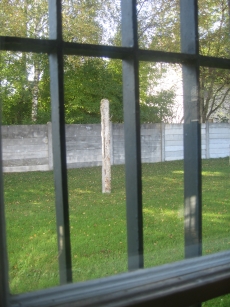
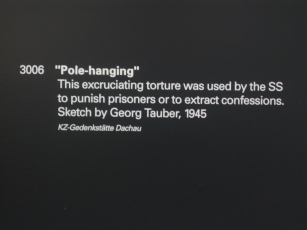
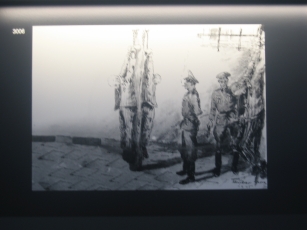
|
Directly south of the bunker were a line of concrete posts. These posts were used for "pole-hanging." Pole-hanging involved tying or chaining a person's hands behind their back, then hoisting their wrists up, lifting their bodies off the ground. This was an excrutiating torture, dislocating shoulders, breaking bones, ripping muscle, and separating tendons. |
|
|
|
|
The Gestapo had a specially-built interrogation room, right inside the entrance. Because of the grisly business that went on behind the door, it was built to be a soundproof room. |
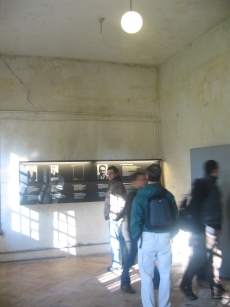
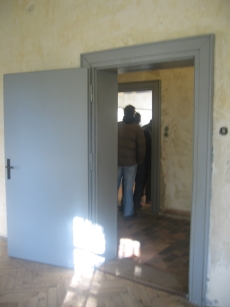
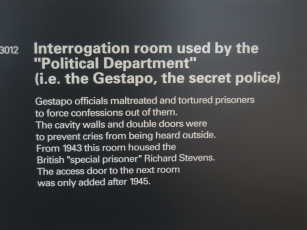
|
|
|
|
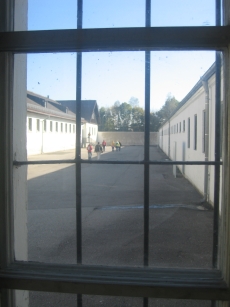
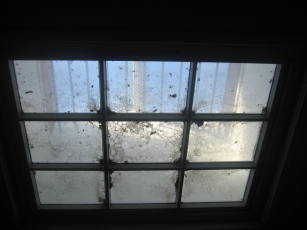
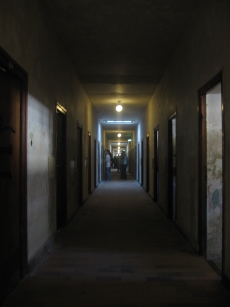
|
Every window had strong iron bars on the outside, and most cell windows had two layers. The last photograph is a shot looking down the long, narrow corridor in the center of the bunker. There were several classes of German-speaking children at Dachau that day, but they weren't laughing or talking as much as normal children do. Even the young ones realized what a horrific place this was. |
| <-- Oct 17th, part II Oct 18th, part II --> | |